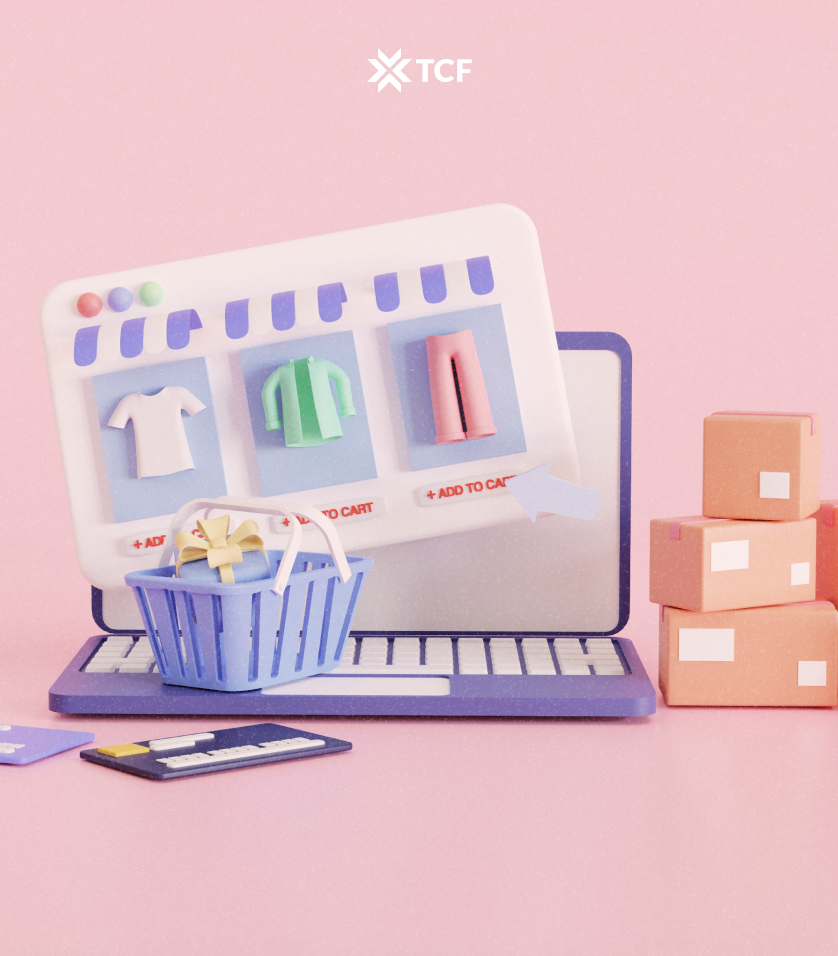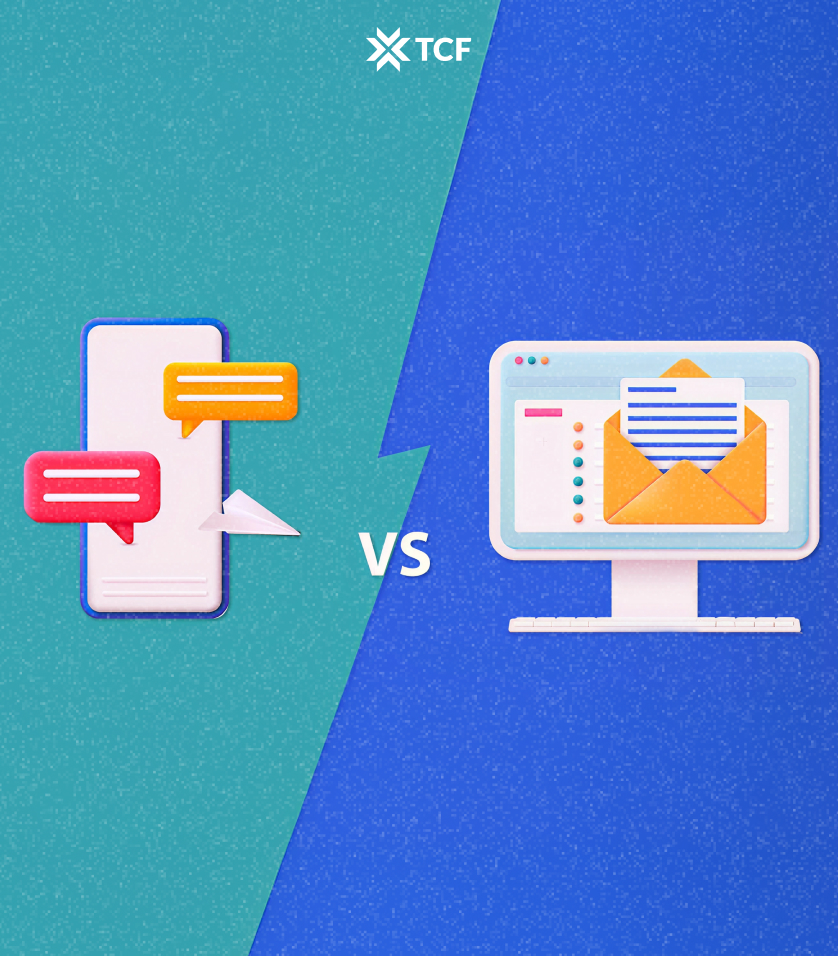Ecommerce looks simple when you’re on the outside. A clean website, products lined up, orders flowing in.
Step behind the curtain, though, and it’s a different story: campaigns draining money faster than they earn it, deliveries that go sideways, inventory that never seems to match demand, and customers who expect instant answers at all hours.
That tension of wanting growth but wrestling with constant problems is the reality for most store owners. The trick is learning how to spot the patterns and deal with them before they spiral.
This guide breaks down the most common ecommerce challenges and shows real fixes you can use right away. If you’ve been wondering how to overcome ecommerce challenges, these are practical solutions you can plug into your store without wading through hype or theory.
[[cta2]]
The Most Common Challenges Ecommerce Store Owners Face
Running an ecommerce business means navigating a minefield of common ecommerce problems that don’t always show up on the glossy side of a storefront. From rising costs to fulfillment messes, there are patterns that keep tripping up even experienced store owners.
Knowing what they are and how to handle them is what keeps your store moving forward instead of stuck in survival mode. Here are the ones that show up again and again:
1. Rising Customer Acquisition Costs (CAC)
Every ecommerce owner feels the squeeze: customer acquisition cost in ecommerce keeps rising, ads cost more, reach less, and convert worse than they used to. Platforms that were once goldmines for affordable traffic are now crowded battlefields where bigger brands outbid smaller ones.
Privacy updates and algorithm changes make targeting harder, so clicks get pricier while results stay flat. Even when campaigns perform, margins take the hit. You’re paying more to bring in customers who may never buy again.
How to fix it:
- Shift focus from one-off buyers to lifetime value. Build post-purchase flows, loyalty programs, and subscription offers that stretch every new customer further.
- Diversify traffic so ads aren’t your only fuel. Organic SEO, influencer partnerships, and content marketing compound over time and ease reliance on paid.
- Treat campaigns like experiments, not bets. Test creatives, audiences, and placements in small batches, then double down only on what works.
- Monitor CAC against LTV relentlessly. If a repeat buyer spends $200 in a year, spending $30 to acquire them is sustainable. Without that balance, it’s a losing game.
When you factor in discounts, returns, and support, your real CAC is often higher than what your ad dashboards show.
2. Shopping Cart Abandonment in Ecommerce
Few things sting more than seeing carts fill up and orders vanish before checkout. Nearly 70% of the shoppers who add products never finish the purchase, often for reasons that could have been prevented.
That’s seven out of ten shoppers walking away at the last second.
Extra fees appear at the last step, forms take too long to fill, payment options are limited, or the site just feels clunky on mobile.
Each bit of friction chips away at trust and patience until the shopper bails. Multiply that by hundreds or thousands of visitors a month, and the revenue loss is staggering.
How to fix it:
- Streamline checkout with fewer steps, guest options, and mobile-friendly design.
- Be upfront about shipping costs and fees before the final screen.
- Add flexible payment choices like Apple Pay, PayPal, and buy-now-pay-later services.
- Set up recovery flows with email or SMS nudges to pull back lost sales.
- Use retargeting ads to remind shoppers of what they left behind.
A cart doesn’t always mean purchase intent. Sometimes it’s your customer’s way of bookmarking, which makes your recovery flows less about pressure and more about perfect timing. It’s one of the classic problems ecommerce store owners face, but it has clear solutions.
3. Conversion Rate Optimization (CRO) Blind Spots
Traffic is only half the battle. If your site isn’t turning visitors into buyers, you’re pouring water into a leaky bucket. The leaks usually hide in plain sight: product pages that don’t show the product in use, calls-to-action that feel generic, trust signals buried at the bottom, or a checkout that takes too many clicks. Many store owners keep pumping money into ads, thinking more traffic will solve the problem, when in reality, fixing a handful of friction points could double their sales without spending a dollar more.
That’s why applying consistent optimization strategies is critical if you want growth that compounds instead of stalls.
How to fix it:
- Audit your product pages regularly: look at copy, images, reviews, and CTAs with fresh eyes.
- Use heatmaps, scroll maps, or session recordings to see exactly where customers lose interest.
- Run structured A/B tests on small elements (headlines, button placement, pricing displays) instead of guessing.
- Simplify the buyer’s journey so the path from product to checkout feels effortless.
Most ecommerce stores convert under 3% of their visitors, which means every small lift in conversion makes a bigger difference than chasing more traffic.
4. Shipping, Fulfillment, and Logistics Challenges
The sale isn’t complete until the package lands in a customer’s hands and that’s where things often unravel. Delays, lost packages, damaged products, and confusing return processes can wipe out the goodwill you earned at checkout.
Customers expect fast, reliable, almost effortless delivery because giants like Amazon have set the standard. For smaller stores, keeping pace means wrestling with rising shipping costs, limited carrier options, and the stress of scaling fulfillment during busy seasons.
One slip can trigger negative reviews, refund requests, and churn that’s hard to recover from.
How to fix it:
- Work with a 3PL once volume makes self-fulfillment too messy or expensive.
- Keep safety stock for bestsellers so you’re not constantly running out.
- Simplify returns with clear policies and prepaid labels.
- Send proactive tracking updates so customers don’t flood support with “where’s my order?” tickets.
- Explore regional warehouses or hybrid models to cut shipping times and costs.
Shoppers are more forgiving of 5-day shipping when they get consistent updates, than of a promised 2-day delivery that arrives late.
5. Struggling to Scale Sales Consistently
Getting the first wave of sales feels exciting, but growth often stalls once the early wins dry up. The ads that worked stop delivering, your email list starts running cold, and influencer collabs bring one-off spikes that fade quickly.
Scaling should assume building repeatable systems that turn marketing into steady revenue. That means spreading risk across multiple channels, making retention as important as acquisition, and creating offers that encourage bigger baskets or recurring orders.
Without these systems, stores stay stuck in feast-and-famine cycles, relying on luck instead of strategy.
How to fix it:
- Diversify acquisition by layering channels (paid, organic, influencer, affiliate), so you’re not at the mercy of one platform.
- Increase sales from the inside with upsells, bundles, subscriptions, and cross-sells.
- Invest in relationships: influencer campaigns and ambassador programs work best when they’re long-term.
- Document what works, repeat it, and refine. Scaling is more about consistency than constant reinvention.
6. DIY Marketing Burnout
Many ecommerce founders start out doing everything themselves. Ads, emails, social, SEO, all squeezed in between product development, customer support, and fulfillment.
In the early days, this scrappy approach works, but as the business grows, marketing becomes a grind of patching campaigns and reacting to platforms that change overnight. Instead of scaling with strategy, you’re stuck running damage control.
How to fix it:
- Cut the noise by automating the low-value tasks first: cart recovery emails, basic reporting, or post-purchase flows.
- Get clear on what you can realistically handle versus what eats time without generating results.
- For the areas where the stakes are highest (big launches, scaling ad spend, or building influencer pipelines) it pays to lean on specialists. That’s where partners such as TCF come in. The team has managed multi-million-dollar campaigns, built engaged communities from scratch, and fine-tuned the exact growth levers small and mid-sized brands need. You can stay focused on steering the brand while specialists handle the campaigns, ads, PR, influencer outreach, and anything else that you have in mind and your to-do lists.
Every campaign you patch together alone might save $500 in fees but cost you $5,000 in lost momentum.
7. Ecommerce Retention and Loyalty Challenges
Winning a new customer is expensive. Losing them after one order is painful. Yet many ecommerce stores put almost all their energy into acquisition while leaving retention as an afterthought.
Once the package is shipped, the conversation ends, and the customer drifts away. Without strong retention, growth turns into a treadmill: pouring money into ads just to replace the customers slipping out the back door. Smart ecommerce retention strategies turn one-time buyers into repeat customers who fuel sustainable growth.Balancing inventory management is one of the trickiest parts of running a store.
The missed opportunity is huge: repeat buyers spend more, refer friends, and cost far less to keep than constantly chasing fresh traffic.
How to fix it:
- Build post-purchase flows that actually nurture: thank-yous, product tips, and tailored offers.
- Launch a loyalty or referral program that rewards repeat behavior.
- Personalize product recommendations based on browsing and buying history.
- Create community touchpoints like private groups or UGC campaigns to deepen the connection.
- Track churn patterns so you know when and why customers disappear, then act on the data.
What keeps them coming back isn’t the product itself, but how easy you make it to reorder, return, or get help
8. Inventory Management Struggles
Balancing inventory is one of the trickiest parts of running a store. Too much stock ties up cash and leaves you sitting on unsold products. Too little stock means constant “out of stock” notices, frustrated customers, and missed revenue.
Things get worse when sales happen across multiple channels and numbers aren’t synced, leading to overselling or messy manual corrections. Spreadsheets might work in the early days, but as soon as order volume picks up, they start to break under the pressure.
How to fix it:
- Use inventory software that updates stock across all channels in real time.
- Track sales patterns and use demand forecasting to prep for peaks.
- Keep safety stock of bestsellers to avoid constant sellouts.
- Automate low-stock alerts so you can reorder before it’s too late.
A sold-out bestseller can double as social proof as long as it doesn’t happen every month.
9. Customer Service and Rising Expectations
Ecommerce customer service expectations have skyrocketed. They don’t just want their questions answered, they want them answered fast and in the channel they prefer. A delayed reply on email, a missed DM on Instagram, or a confusing return process can undo months of trust-building.
As stores grow, the volume of inquiries rises, and small teams quickly feel overwhelmed. Without the right systems, tickets pile up, reviews turn sour, and shoppers move on to brands that make them feel valued.
How to fix it:
- Centralize support through a helpdesk that pulls in email, chat, and social messages.
- Use automated replies for common FAQs like shipping times or return policies.
- Add live chat to your site so customers don’t bounce while waiting for answers.
- Train your team (or yourself) to resolve issues in one interaction instead of dragging them out.
10. Expanding Into New Locations and Regulatory Hurdles
Selling into new markets sounds like a growth win, but it often becomes one of the hardest ecommerce challenges. Each country brings its own web of customs duties, VAT, and tax rules that can catch you off guard. Even simple items can get stuck at the border without the right paperwork, while surprise duties at delivery frustrate customers and cut into your margins.
For food, supplements, or pet products, the challenges go up a level. Different regions enforce strict ingredient restrictions, labeling rules, and shelf-life requirements. A product that sells freely in the U.S. might need additional certifications in the EU, or be blocked altogether in certain countries. Packaging also matters: allergen warnings, expiration dates, and local language labels are non-negotiable in many markets.
How to fix it:
- Research compliance before launch, especially for food and consumables.
- Partner with 3PLs that handle customs and cross-border logistics.
- Adapt packaging, labeling, and even product formulations to local standards.
- Be upfront about shipping times and duties so customers aren’t blindsided.
Cross-border growth is possible, but regulations and food laws make planning non-optional.
11. Ecommerce Website Issues: Speed, UX, and Security
Even the best products can’t make up for a site that loads slowly, breaks on mobile, or feels sketchy at checkout. Customers won’t wait around for laggy pages or risk their card details on a store that doesn’t look secure.
On top of that, messy navigation or too many clicks between product and purchase kills conversion. For small teams juggling design, apps, and updates, these problems sneak in easily and silently chip away at sales.
How to fix it:
- Optimize site speed by compressing images, trimming heavy scripts, and using a CDN.
- Test every page on mobile, most shoppers are browsing and buying on their phones.
- Simplify navigation so customers can find what they want in two or three clicks.
- Keep your platform, themes, and plugins updated to patch vulnerabilities.
- Display visible trust signals like SSL badges and secure payment logos.
A slow, unpolished site feels less trustworthy than a competitor’s even if both use the exact same secure payment processor
12. Competition in Ecommerce and Market Saturation”
No matter the niche, ecommerce feels crowded. New stores launch daily, and established brands use bigger budgets to dominate ad space, search rankings, and customer attention. Shoppers can compare products in seconds, so even a small slip in price, speed, or experience can send them elsewhere.
For store owners, it creates constant pressure to stand out without racing to the bottom on discounts.
How to fix it:
- Define and showcase a clear unique selling proposition (USP) that competitors can’t easily copy.
- Invest in brand storytelling that connects with customers beyond price.
- Focus on customer experience from smooth site navigation to memorable unboxing.
- Build loyalty programs and communities to keep customers coming back, even when cheaper options exist.
12. Analytics Paralysis in Ecommerce
Ecommerce dashboards spit out endless numbers: CAC, ROAS, AOV, LTV, bounce rates, traffic sources, retention cohorts. It’s easy to drown in data and miss the story it’s actually telling. Store owners often chase the wrong numbers (bragging about traffic spikes or social followers) while ignoring the ones that directly drive profit.
The truth is, data is only valuable if it informs action. Without focus, analytics become noise that eats up time and leaves you second-guessing every decision.
How to fix it:
- Narrow down to a handful of core KPIs: CAC, LTV, conversion rate, repeat purchase rate, and AOV.
- Centralize your data with analytics tools that pull everything into one view (GA4, Shopify Analytics, or BI dashboards).
- Use benchmarks in your industry to give context. A 2% conversion rate in apparel may be healthy, but a disaster in beauty.
- Turn insights into direct actions. Low AOV? Push bundles. Weak retention? Build re-engagement flows.
Most stores fail because they track too much data, and act on almost none or the wrong ones.
14. AI and Automation Overwhelm
Every week, a new tool promises to save hours and boost sales with AI or automation. AI in ecommerce can be powerful, but overwhelming if you don’t approach it carefully. The flood of options leaves store owners unsure of what’s worth paying for and what’s hype.
Some dive in too fast, stacking apps that don’t integrate well and end up adding complexity instead of reducing it. Others hold back completely, worried about losing the personal touch or wasting money.
Either way, the result is frustration and missed opportunities.
How to fix it:
- Start small with one tool that solves a real bottleneck, like an AI chatbot for customer questions or automated email flows.
- Look for apps that integrate directly with your ecommerce platform to avoid messy setups.
- Audit your AI tool stack every few months: cut anything unused or redundant.
- Keep the human element in place for complex interactions, using automation only where it improves speed or consistency.
15. Ecommerce Data Privacy and Compliance Shifts
Data rules keep tightening, and small stores often get caught in the middle. Cookie tracking changes make it harder to target ads the way you used to.
Regulations like GDPR or CCPA require clear consent, opt-outs, and strong data privacy compliance practices that can feel overwhelming without a legal team.
Customers themselves are more cautious too. They want transparency and control over their data. If your store doesn’t meet those expectations, you risk both fines and lost trust.
How to fix it:
- Build a first-party data strategy with email lists, loyalty programs, and preference centers.
- Add clear cookie banners and easy unsubscribe options to stay compliant.
- Collect only the data you actually need and keep it secure.
- Stay up to date on major privacy changes in the regions you sell to.
Conclusion
Running an ecommerce store will always come with bumps, but none of these ecommerce challenges are deal-breakers. They’re signals, pointing to the parts of your business that need more structure, smarter tools, or a sharper strategy.
Costs rise, customers change, competitors crowd in. That’s the reality of online retail. What sets successful stores apart is how consistently they adapt.
Think of this less as a checklist you cross off once, and more like a set of levers you can pull as your store grows. Fixing your checkout, dialing in retention, streamlining fulfillment, and embracing the right tech at the right time all compound into smoother operations and healthier margins.
The takeaway: you don’t need to solve everything at once. Pick the challenge slowing you down the most right now, apply the fixes, and keep building from there. Over time, the grind feels less like chaos and more like progress. That’s the real answer to how to overcome ecommerce challenges in the long run.
[[cta2]]





.png)


.png)




